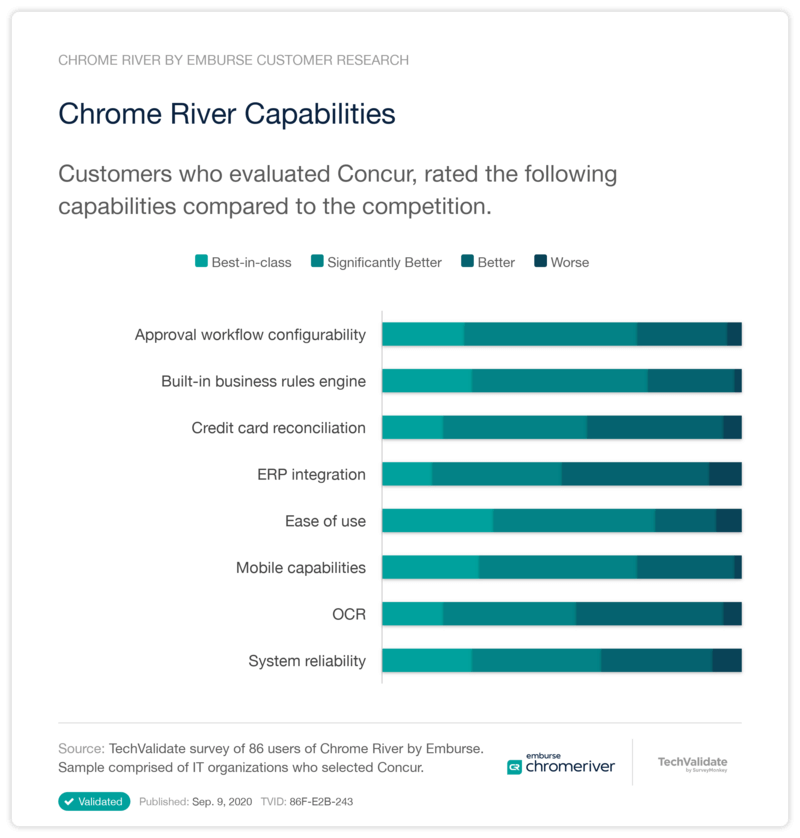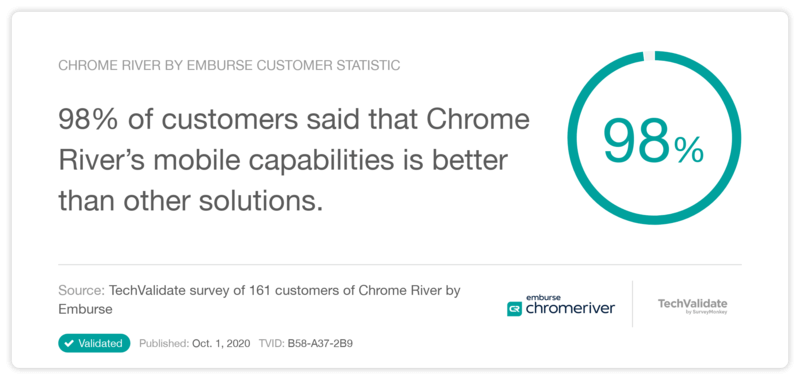Digital transformation is one of the top priorities for businesses these days. It's impossible to stay competitive without accessing the power of unified data across your organization. However, many enterprises cannot execute their digital transformation goals due to their data being siloed in different systems. Integration is the need of the hour - and expense management software is no exception. Expense reporting ties into key areas of your organization and is an important variable that drives many financial decisions. You cannot afford to have this data stored in a separate system, away from the rest of your organization.
Here are the three major functions your expense management software needs to integrate with.
ERP and Accounting Systems
ERP systems cut to the core of most finance department functions. Many ERP solutions come with inbuilt expense reporting modules to provide an all-in-one solution. While such solutions remove the need for integration, they might not be the best solution for a global organization. For starters, many ERP providers add expense management as an afterthought to their core solution.
As a result, user experience is often less than ideal. ERP providers typically don't invest in upgrading their expense reporting modules often. A standalone best-of-breed expense reporting solution that integrates with your native ERP solution gives you greater flexibility and insight into employee spending.
Managing employee spending thresholds is easy when both modules integrate. You can instantly compare employee spend against the finance department's budget, automate approvals, and set customized rules. For example, expenses belonging to a category can be automatically routed for manual audit approval, while others can be approved without human intervention.
ERP integration also allows finance departments to project cash flows better and analyze them against employee expense trends. A powerful expense reporting analytics package can analyze prior trends and project expenses based on spending patterns. You can uncover potential areas of cost reduction easily instead of pouring through spreadsheets for hours on end.
Thanks to integration, your expense data can be automatically uploaded to your accounting system for quarterly and annual reconciliations. A common integration challenge that organizations face is getting their ERP system to talk to their expense reporting system. However, a best-in-breed expense management solution will offer a range of customized integration strategies, whether through APIs or secure file transfers.

HCM Systems
Analytics has come to HR functions, and one of the most important components of an HCM system is payroll processing. Expense reimbursements are tricky to handle because organizations need to classify and verify them appropriately before releasing payment.
Global organizations employ HCM systems that project employee costs down to the branch level - excluding expense data from these projections doesn't make sense. Like ERP vendors, many HCM vendors offer expense reporting modules in their software. However, these modules may lack the flexibility you need to leverage the data at your disposal.
For starters, your HCM provider might struggle to connect to your ERP solution and create data silos. Next, the primary focus of HCM software is to ensure HR policy enforcement - but expense reporting cuts across both HR and finance roles and requires input from both departments. Organizations that don't integrate these functions tend to have cumbersome processes that result in delayed reimbursement and less compliance.
Integrating a best in class expense reporting software with your HCM will allow you to design more intuitive workflows. Thanks to seamless ERP integration, enforcing HR policy becomes easy, and HR teams can drill deeper into expense trends by combining the power of two software solutions.
Thanks to the power of integration, establishing a clear and complete audit trail is simple and automatic. Employees don't need to jump between systems to add data from one to the other. This makes internal compliance a breeze and employees can focus on uncovering noncompliant patterns instead of executing clerical tasks such as exporting data onto a spreadsheet and importing it into another system.
Onboarding new employees and removing old employees from siloed systems is challenging since the same task has to be executed multiple times. An integrated solution makes it simple to add new employees to expense reporting systems as a part of their onboarding process. Similarly, old employees can be removed from both systems at the click of a button.
Travel Booking Management
Travel managers within organizations face a mountainous task. Not only do they need to create efficient itineraries, they also need to pay heed to both HR policies as well as employee expense thresholds. Executing this task typically requires them to visit multiple travel vendors, compile rates, and figure out the best cost versus value trade-off.
Integrating your expense management software with your travel booking provider or booking tool makes expense report processing a breeze. You can import costs directly into your expense management software, manage thresholds automatically, and set up alerts in case of non-compliance.
Choose an expense reporting solution that has a mobile presence. This will allow your employees to scan or take pictures of their receipts and import expenses directly into the software. You can also use the software to reconcile expenses with compliance thresholds and credit card statements.
One of the challenges of integrating credit card reconciliation is the large number of card providers and the different types of cards they provide. A solution that uses fully customizable integration methods will allow you to import this data seamlessly and deploy it across various business functions.

Unlock Your Expense Reporting Software's Potential
A powerful expense reporting software is great, but it works best when you integrate it with other areas of your organization. Expense report processing cuts across multiple business areas, and integrating your software solutions is the way forward. You'll be able to leverage the wealth of data you collect and create efficient business processes that increase your bottom line.
Technology is changing rapidly, and integration is just one way to future-proof your investments. Learn more about how you can create an agile expense management structure by leveraging the power of technology.
Search
Subscribe
Latest Posts
Posts by Category
Our choice of Chrome River EXPENSE was made in part due to the very user-friendly interface, easy configurability, and the clear commitment to impactful customer service – all aspects in which Chrome River was the clear winner. While Chrome River is not as large as some of the other vendors we considered, we found that to be a benefit and our due diligence showed that it could support us as well as any large players in the space, along with a personalized level of customer care.
We are excited to be able to enforce much more stringent compliance to our expense guidelines and significantly enhance our expense reporting and analytics. By automating these processes, we will be able to free up AP time formerly spent on manual administrative tasks, and enhance the role by being much more strategic.